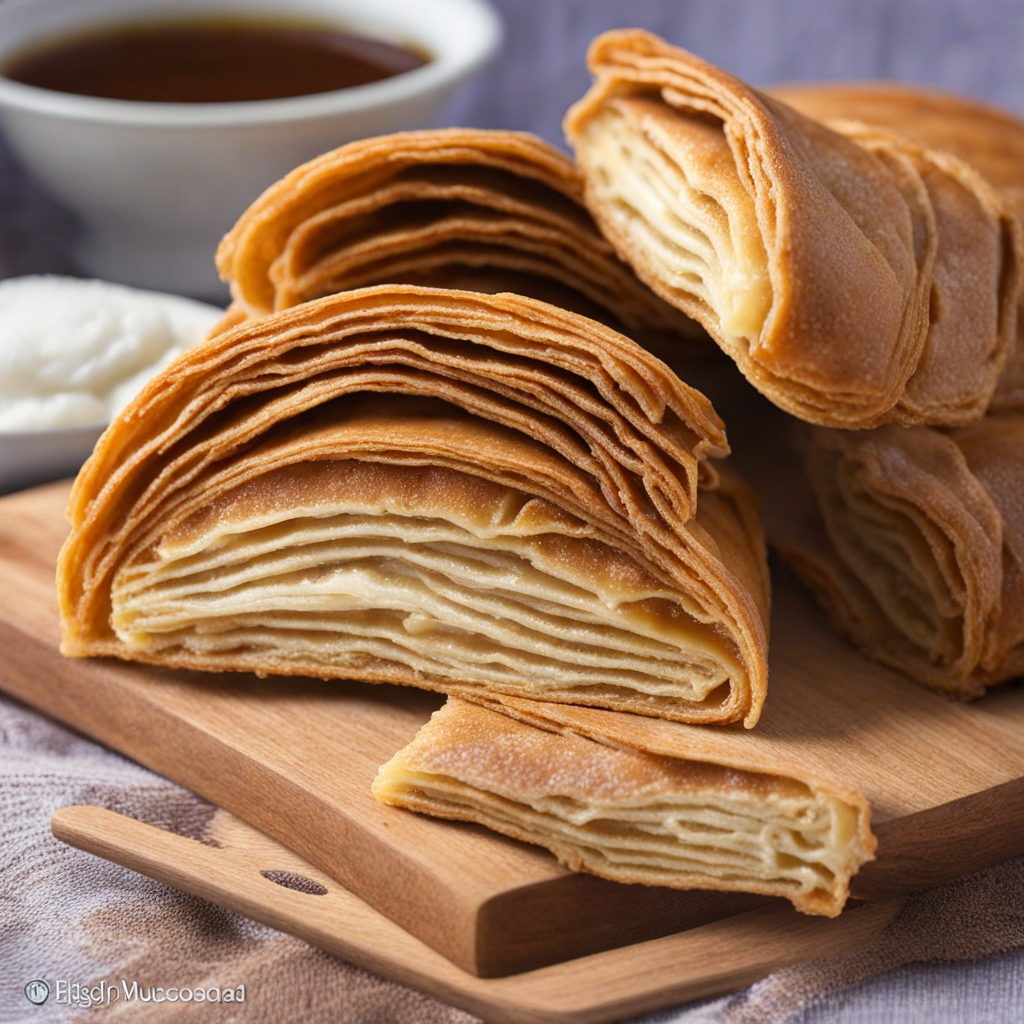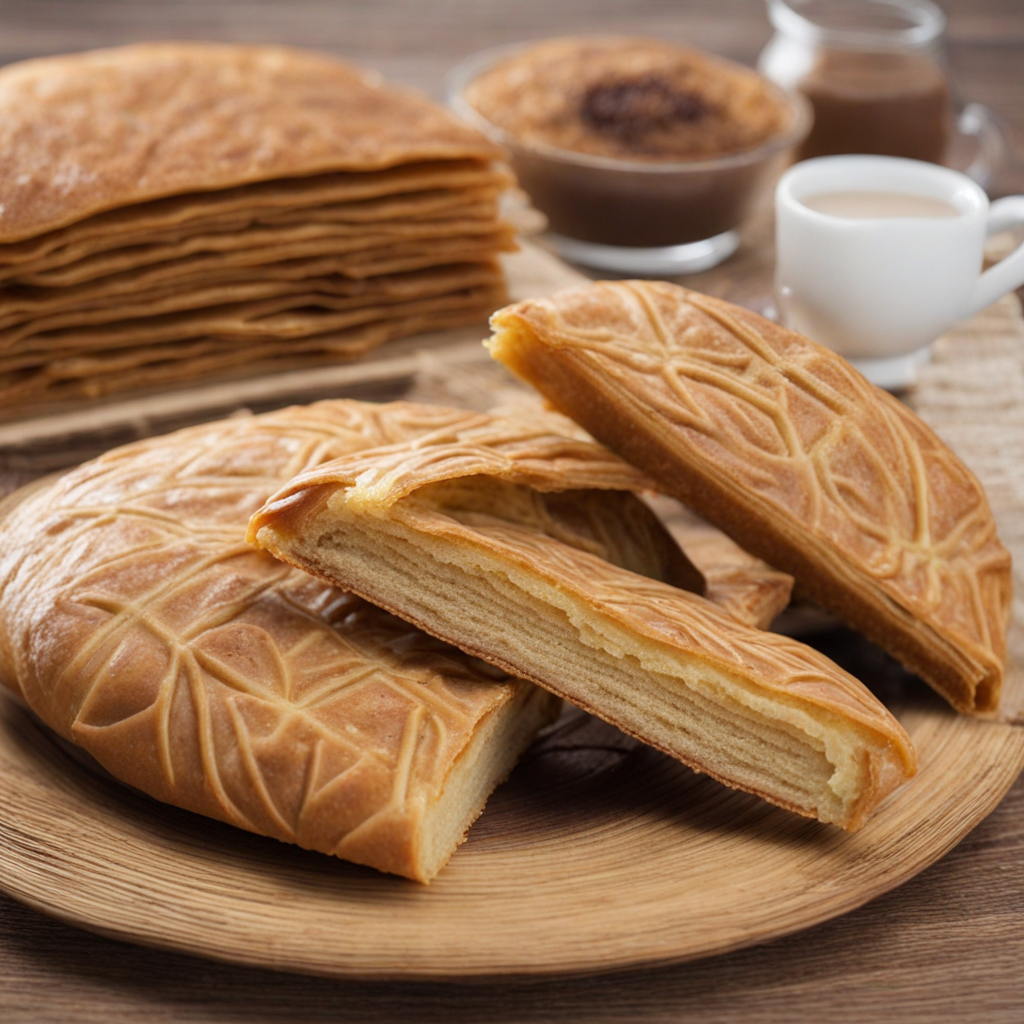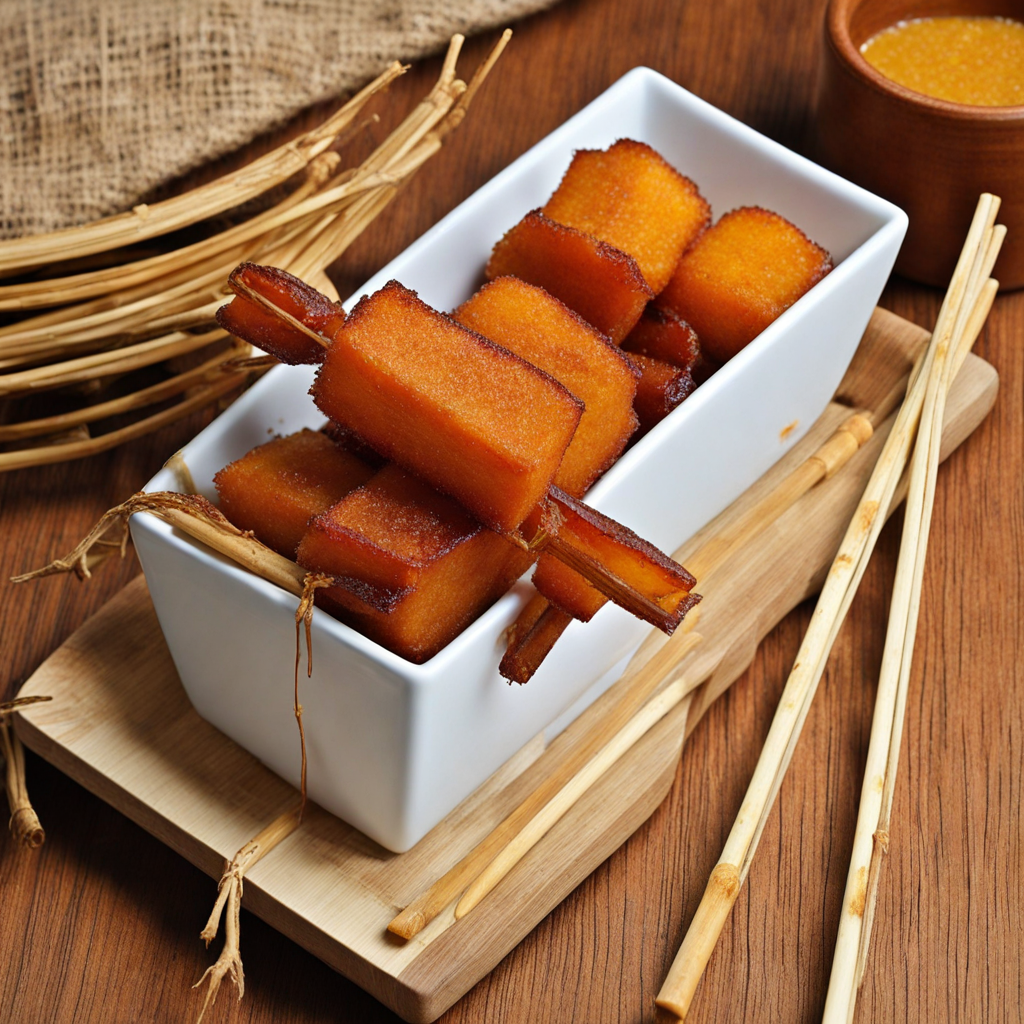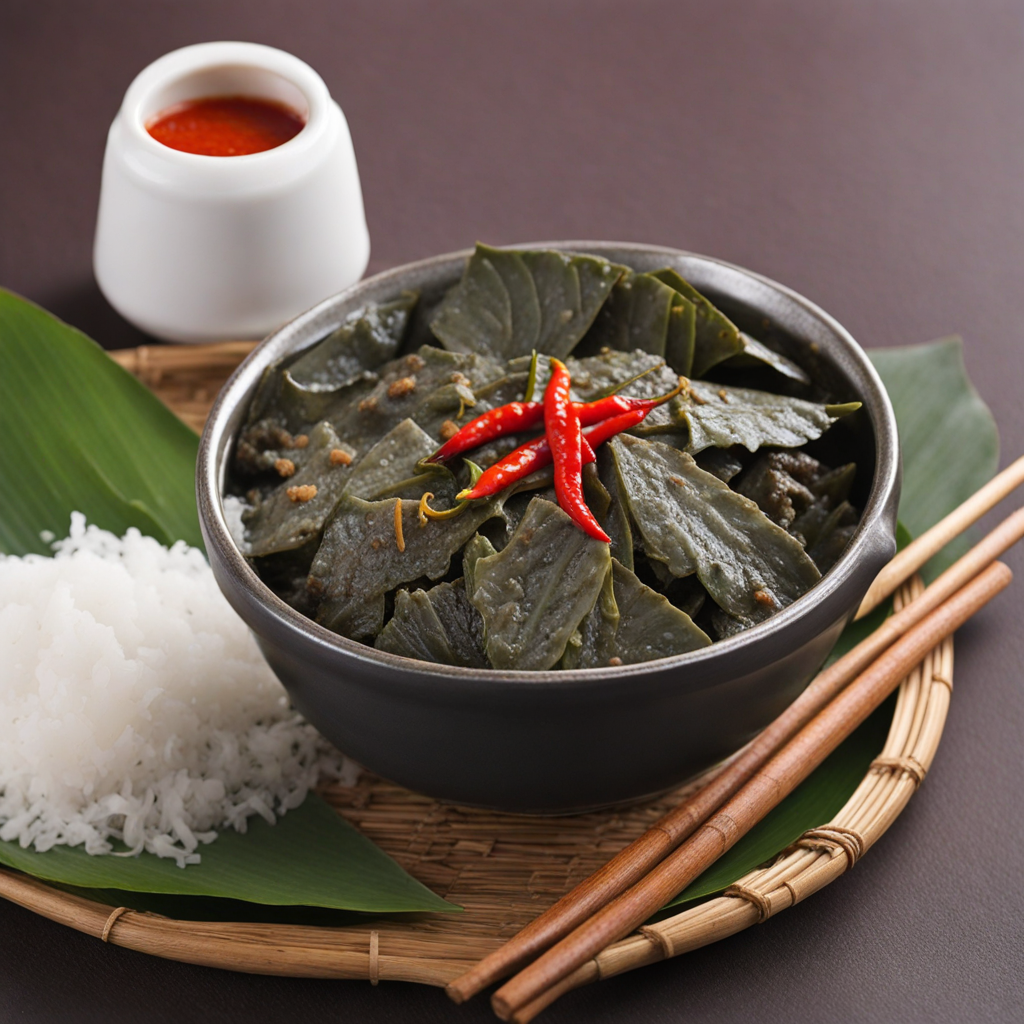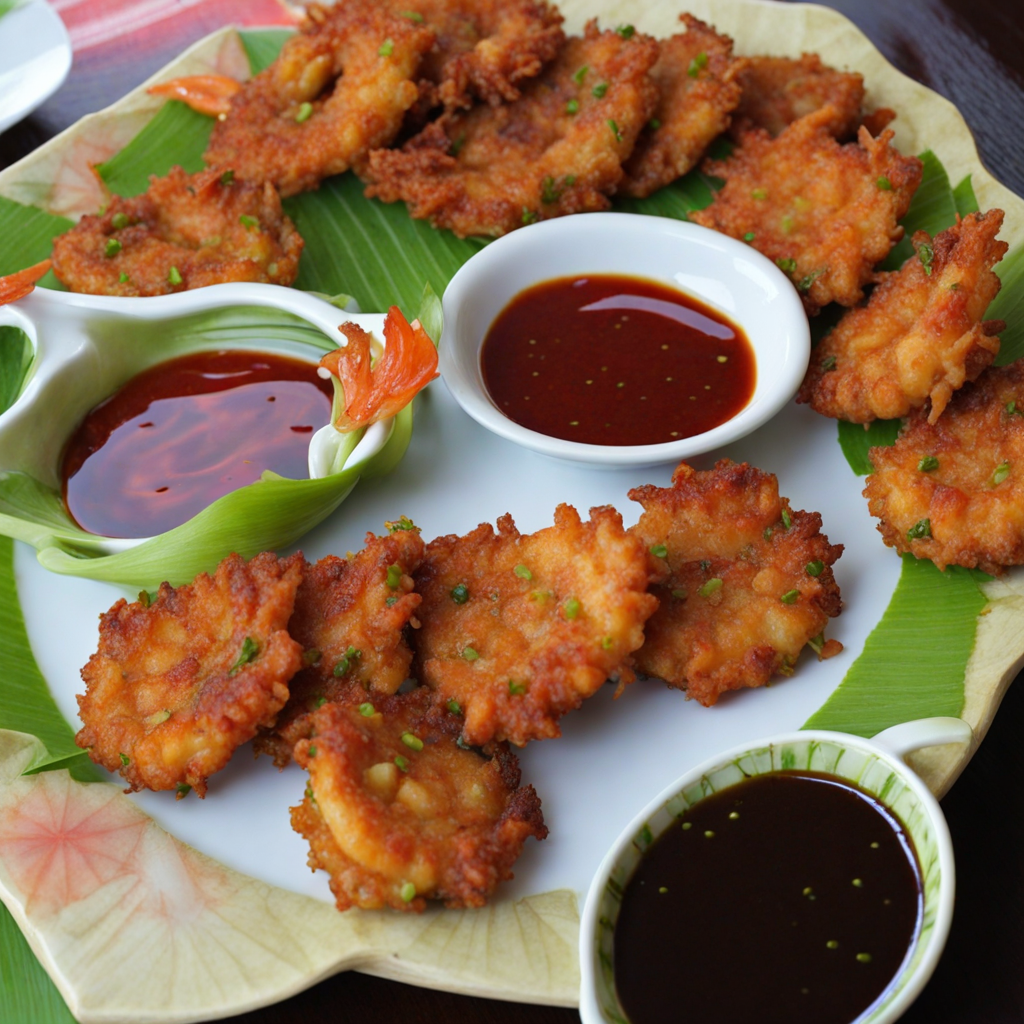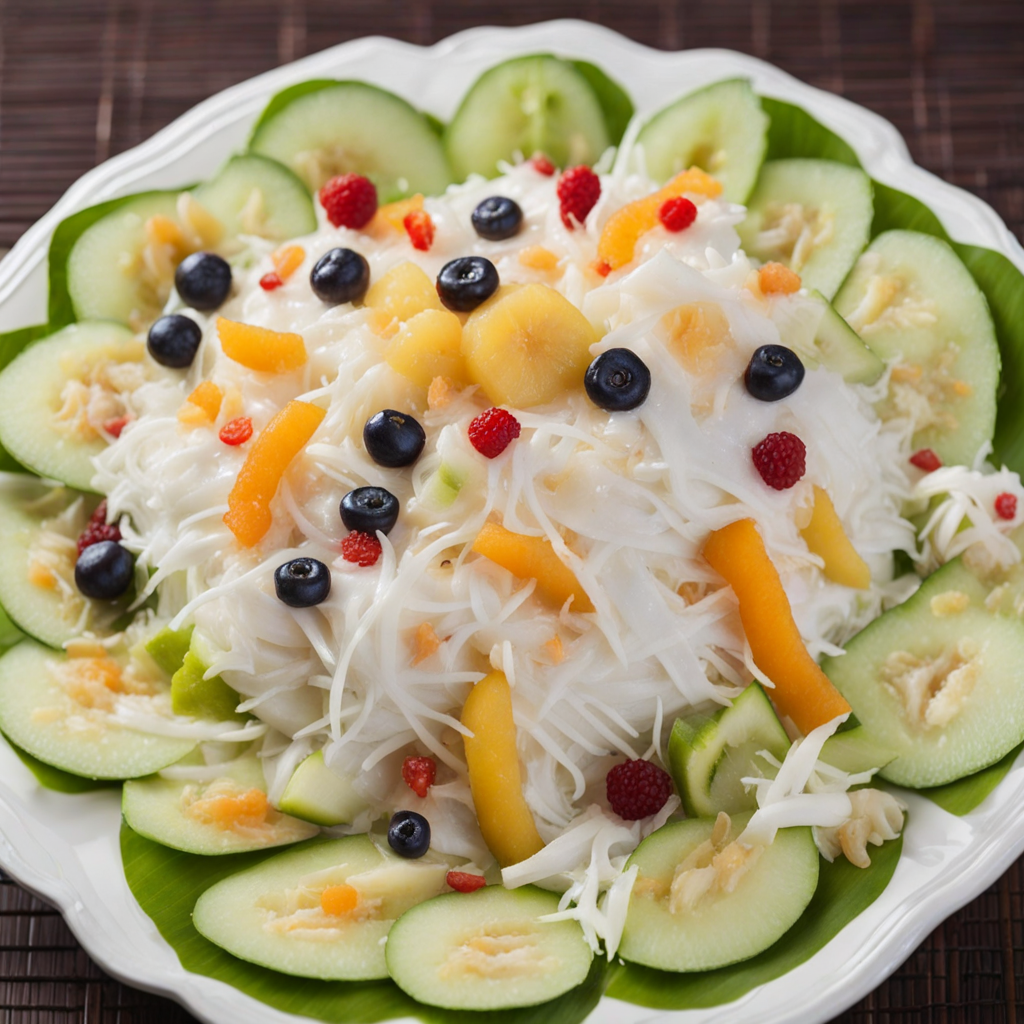Piaya
Piaya is a traditional Filipino treat that hails from the province of Negros Occidental, known for its distinct and delightful flavor profile. This unleavened flatbread is filled with a sweet mixture of muscovado sugar, which is derived from unrefined sugarcane, and sometimes includes a hint of sesame seeds for added texture and richness. The dough is typically made from a blend of flour, water, and a pinch of salt, which is then rolled out and filled with the sweet filling before being cooked on a hot griddle. The result is a deliciously crispy exterior that encases a warm, gooey center, creating a satisfying contrast that captivates the taste buds. The preparation of piaya is an art in itself, as each piece is carefully crafted to achieve the perfect balance of flavors. When cooked, the outside develops a slightly charred, golden hue, while the inside remains soft and sweet. Often enjoyed as a snack or dessert, piaya can be savored on its own or paired with a hot cup of coffee or tea, making it an excellent companion for a leisurely afternoon. Its versatility also allows for variations in filling, with some modern interpretations incorporating ingredients like chocolate or ube, providing an exciting twist to the classic recipe. In addition to its delightful taste, piaya is also a representation of Filipino culture and heritage. It is often sold by street vendors and at local markets, making it an accessible treat for both locals and tourists alike. The experience of biting into a freshly cooked piaya, with its sweet and savory aroma wafting through the air, offers a sensory journey that reflects the warmth and hospitality of the Filipino people. Whether you're a seasoned foodie or a curious newcomer, piaya is a must-try delicacy that promises to leave a lasting impression.
How It Became This Dish
The History of Piaya: A Delicious Journey Through Time #### Origins of Piaya Piaya, a beloved delicacy from the Philippines, has its roots deeply embedded in the rich cultural tapestry of the archipelago. This traditional flatbread, typically filled with a sweet mixture of muscovado sugar and sometimes with a hint of sesame seeds or other flavorings, is particularly associated with the Visayan region, especially the province of Negros Occidental. The exact origins of piaya are somewhat murky, much like the sugar cane fields that blanket the landscapes of Negros, but it is thought to have emerged during the Spanish colonial period in the 16th century. The name “piaya” is derived from the Hiligaynon word “piay,” which means "to flatten." This culinary creation likely evolved from the Spanish influence on Filipino cuisine, which introduced various baking techniques and methods. The utilization of sugarcane, brought by the Spanish, played a crucial role in the development of this sweet treat. The Negros region, dubbed the "Sugar Bowl of the Philippines," became a significant site for sugar production, making it the perfect backdrop for piaya’s creation. #### Cultural Significance Piaya is more than just a food item; it is a symbol of Filipino culture, particularly in the Visayas region. It represents the ingenuity of local communities in creating something delightful from readily available ingredients. The preparation of piaya often involves family gatherings, where generations come together to make this flatbread, thus fostering a sense of community and continuity. In many Filipino households, piaya is more than just a snack; it serves as a celebratory food during festivals and special occasions. It is often served during fiestas, weddings, and holidays, encapsulating the spirit of togetherness and joy. The act of sharing piaya with friends and family underscores the Filipino value of hospitality—a trait that is deeply woven into the nation’s identity. Moreover, piaya has also found its way into the larger context of Filipino identity. As the country has experienced waves of migration, this culinary gem has traveled with Filipinos abroad. It serves as a nostalgic reminder of home for many expatriates and a gateway for others to experience Filipino culture. #### Development Over Time As with many traditional foods, piaya has undergone a transformation over the years. Initially, piaya was a simple concoction of flour, water, and muscovado sugar. However, as culinary practices evolved and influences from other cultures seeped into Filipino kitchens, piaya began to diversify in terms of ingredients and flavors. In the mid-20th century, during the post-war era, piaya gained popularity beyond its regional origins. The invention of mass production techniques allowed piaya to be commercially made and distributed. The introduction of commercial bakeries in the 1960s and 1970s led to the mass availability of piaya in markets and stores, making it accessible to a broader audience. New flavors began to emerge, with variations such as piaya filled with ube (purple yam), mango, or chocolate, catering to contemporary tastes while still respecting traditional roots. The 21st century saw an increased interest in artisanal and locally sourced foods. Many bakers and culinary enthusiasts began to revive traditional recipes and methods, focusing on quality ingredients and craftsmanship. This resurgence of interest not only preserved the authenticity of piaya but also brought it into the realm of gourmet food, appealing to a modern palate while maintaining its cultural significance. #### The Modern Piaya Experience Today, piaya can be found in various forms, from the traditional muscovado-filled version to innovative takes that incorporate modern flavors and ingredients. Artisanal bakeries, especially in cities like Bacolod and Iloilo, are now experimenting with unique fillings while still honoring the classic recipe. The flatbread is often enjoyed as a snack or dessert, accompanied by coffee or tea, or even as a breakfast item. The rise of social media has also played a significant role in piaya's contemporary popularity. Pictures of beautifully crafted piaya, showcasing its golden crust and rich filling, have become a favorite among food bloggers and influencers. This visibility has not only introduced piaya to a global audience but has also encouraged local entrepreneurs to innovate and promote this traditional food. Additionally, piaya's sustainability has become a point of focus as consumers increasingly seek out foods that are both delicious and ethically sourced. Many local producers emphasize using organic ingredients and traditional techniques, appealing to the growing market of health-conscious consumers who appreciate the culinary heritage behind their food. #### Conclusion The history of piaya is a testament to the resilience and creativity of Filipino culture. From its humble beginnings in the sugarcane fields of Negros to its status as a symbol of community and celebration, piaya has transcended generations. It embodies the spirit of innovation while remaining firmly rooted in tradition, illustrating the dynamic nature of food as a cultural artifact. As piaya continues to evolve, it retains its essence as a comfort food that brings people together. Whether enjoyed at a local fiesta or shared among family and friends, piaya serves as a delicious reminder of the Philippines' rich history and vibrant culture. In every bite, one can taste the sweet legacy of a nation that has mastered the art of transforming simple ingredients into something truly extraordinary.
You may like
Discover local flavors from Philippines


